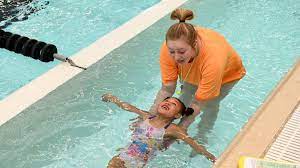Every week across Australia, thousands of children step into a pool for the very first time. Some are excited. Others are unsure. But all of them rely on one person to make their experience safe, enjoyable, and effective: their swim teacher.
Being a great learn-to-swim instructor takes more than knowing how to swim. It’s about creating an environment where learners feel secure, confident, and inspired to keep trying. And it all starts with proper training—through a certified water safety course.
If you’re aiming to be more than just a swim teacher—to be a memorable one—here’s what it takes.
Swimming Ability Isn’t Enough—Teaching Is a Skill
Being able to demonstrate a perfect freestyle stroke won’t guarantee you can teach a five-year-old how to float. Teaching swimming is about communication, empathy, and structure.
A good instructor breaks down skills into simple, achievable steps and adapts their approach based on who’s in the water. That’s why a water safety course focuses on teaching how to teach, not just what to teach.
These programs include:
- Safety and supervision techniques
- Child development and communication methods
- Lesson planning across ability levels
- Managing group dynamics in aquatic environments
Great swim teachers understand that success isn’t always about technique—it’s often about trust.
Qualities of an Effective Swim Teacher
If you’re wondering how to become a top-tier learn-to-swim instructor, here are the traits that matter most:
1. Patience Above All
Learning to swim can be scary. Whether it’s a hesitant toddler or an adult facing a lifelong fear, the best teachers remain calm, encouraging, and never push too fast.
2. Clear Communication
Great swim teachers use simple, direct language and reinforce instructions with hand signals or visual demonstrations. They check for understanding and give feedback that’s both constructive and kind.
3. Consistency
Children especially thrive on routine. Establishing a reliable lesson structure—warm-up, skill practice, games, review—helps build familiarity and confidence over time.
4. Adaptability
No two swimmers are the same. Good teachers adjust their style for different personalities, ages, and abilities. What works for a confident 10-year-old might overwhelm a nervous five-year-old.
5. Safety Awareness
The pool can be unpredictable. A great instructor stays alert, manages risk, and creates a controlled environment—even when multiple swimmers are in the water.
Build Trust First, Technique Second
Take Olivia, for example. She’s eight, and she refuses to let go of the wall. She’s had a near-drowning scare and tenses up the moment water hits her face.
A strong swim teacher doesn’t force progress. Instead, they meet Olivia where she’s at. That might mean spending an entire lesson splashing at the edge or just sitting on the step together.
Trust comes first. Once Olivia feels safe, the strokes will follow.
This kind of instinct and care is exactly what’s taught in a structured water safety course. Teachers learn how to observe, encourage, and coach without pressure.
Practical Tips for Teaching Beginners
Whether you’re newly qualified or working toward your first placement, here are some proven techniques to help your students succeed:
- Use names often – It builds rapport and helps maintain focus.
- Celebrate small wins – A bubble blow or confident jump-in is worth recognising.
- Be in the water – Especially for beginners. It builds connection and allows for hands-on guidance.
- Limit distractions – Keep lessons focused. Too many toys or noise can overwhelm or distract students.
- Keep them moving – Avoid long wait times between turns to keep energy up and nerves down.
- End on a positive – Always finish with a smile, a game, or a skill they can do well.
Want to Teach? Start with a Water Safety Course
The first step to becoming a qualified learn-to-swim teacher in Australia is to enrol in a certified water safety course. This course will prepare you with both the theoretical and practical skills to teach swimmers of all ages.
You’ll cover:
- Aquatic safety principles
- Supervision and emergency response
- Effective teaching frameworks
- Learner behaviour and skill progression
- CPR and risk awareness
Courses are offered nationally and typically include a mix of online learning, in-water sessions, and supervised practical experience.
There’s High Demand for Great Teachers
Australia is currently facing a shortage of qualified swim instructors. According to Swim Australia, thousands of lessons are being delayed or cancelled due to the lack of teachers—particularly in regional areas.
That means the job opportunities are there, and they’re growing. Whether you want to work casually around your schedule or build a full-time aquatic career, this qualification opens doors.
Final Thoughts
So—how can I be a good learn to swim teacher? It starts with the right training and grows through experience, patience, and care.
A good instructor knows the strokes. A great one knows their students. With a certified water safety course behind you, you’ll be equipped to do both—and you’ll play a vital role in making Australia safer, one swimmer at a time.

